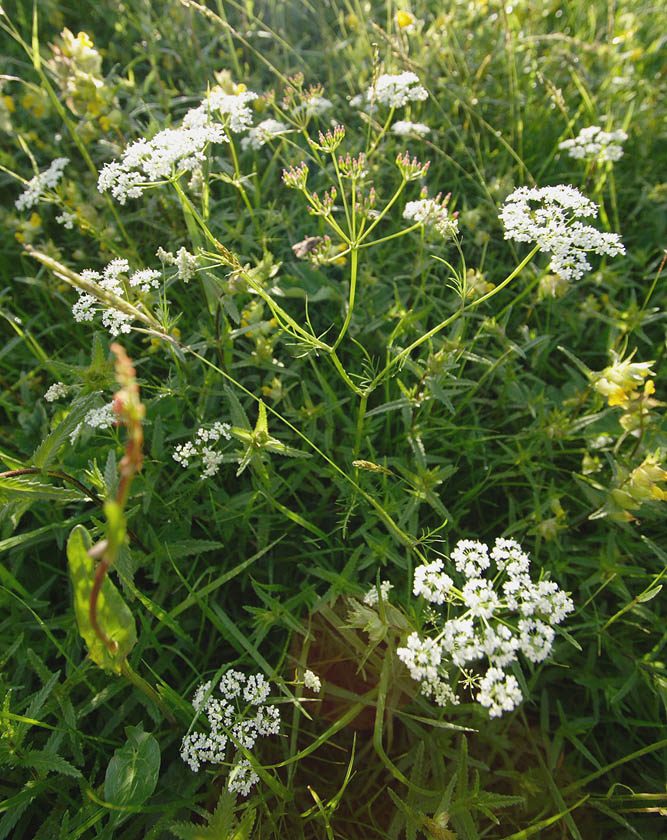Description
Pignut is a slender, hairless, perennial member of the carrot family with narrow leaflets on two to three times pinnate leaves. The white flowers are present from May to July. The common name of pignut refers to the plant’s rounded brown tubers which are sought out by pigs and can be eaten by humans. Eaten cooked or raw, these tubers have a pleasant, nutty flavour.
Habitat Information
This perennial herb is found in two broad ranges of habitat; damp meadows or pastures and woodlands. It is particularly characteristic of some types of northern hay meadow. Shoots emerge early in the spring and by late June most plants have set seed. By mid July pignut has died back, only its underground tuber remaining alive. This allows pignut to exploit woodland situations because most of its growth has been completed before the leaf canopy has fully developed; it therefore avoids any shade problems. Pignut is strongly dependent on seed for regeneration and will be lost from unmanaged, rank grasslands.
Growing Information
Pignut seed dormancy is broken by a period of chilling: seed should be sown in autumn and over-wintered after which germination will be triggered as temperatures rise in the following spring. All that will show above ground in the first year is a single flat seed leaf – all other growth will occur below ground to form a small pignut tuber. Once the tuber is formed (around July) the seed leaf will die back the tuber will become summer dormant. The tubers can be moved and planted out at this stage. The tuber sprouts back into growth in the autumn, but the leaves do not emerge above ground until the following spring.


